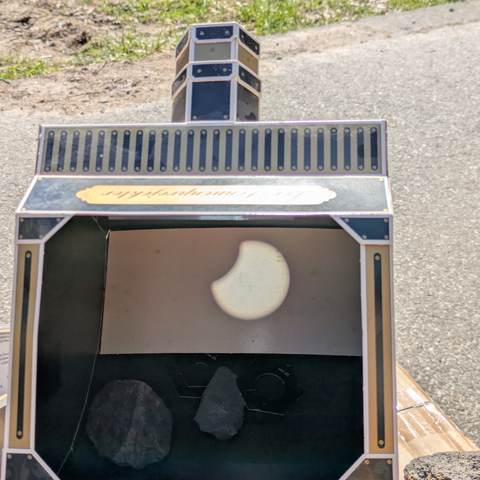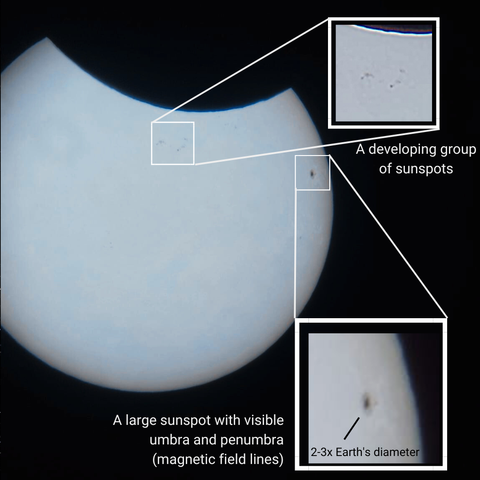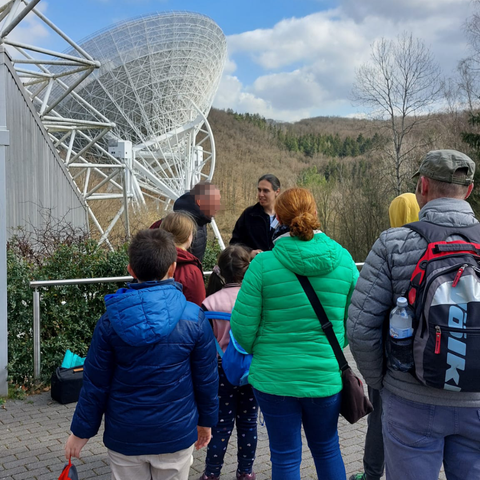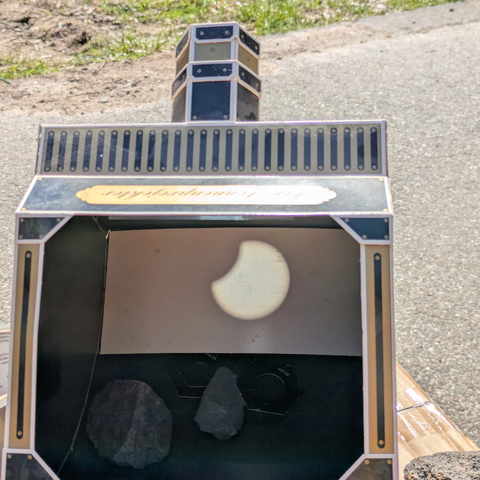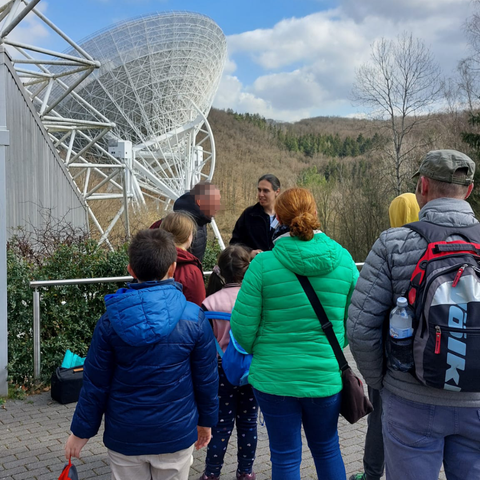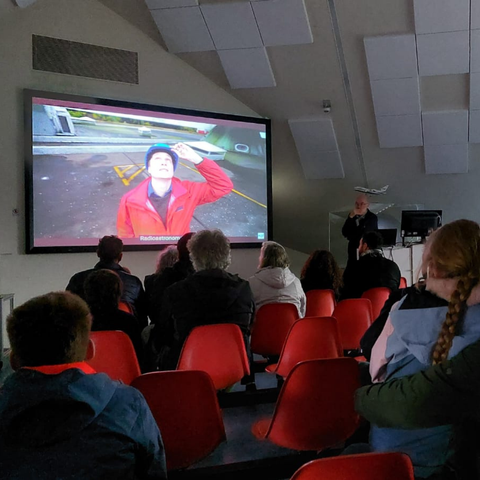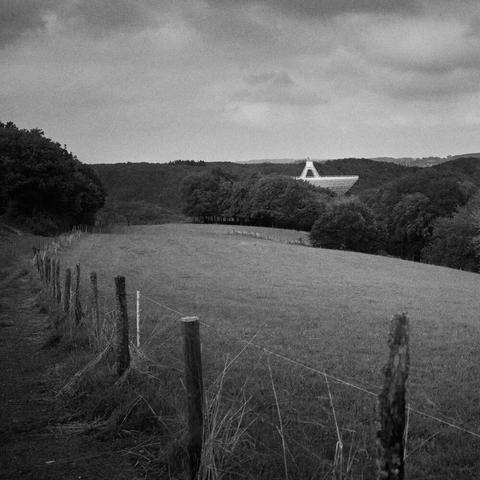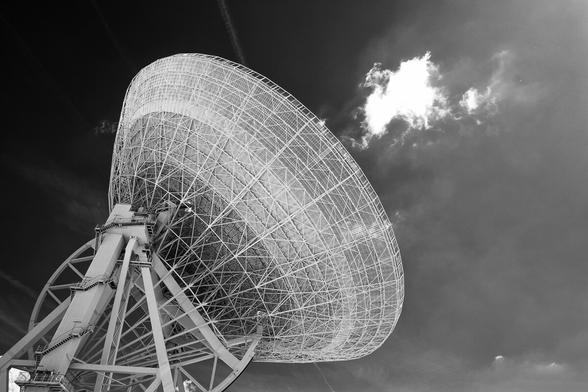Wow, was für ein faszinierender Astronomietag! Der Himmel war sowohl in Bonn als auch in Effelsberg meistens klar und unsere Besucher:innen konnten die partielle Sonnenfinsternis (SoFi) am 29.03. mit eigenen Augen erleben!
Eine SoFi tritt auf, wenn der Mond zwischen die Erde und die Sonne wandert. Das passiert nur bei Neumond und auch nur, wenn der Mond auf einer Linie mit Sonne und Erde steht. Dabei kann es drei Arten von SoFis geben:
👉 Totale SoFi - wenn die Sonne komplett verdeckt wird. Eine totale SoFi dauert maximal 7 Minuten 32 Sekunden;
👉 Partielle SoFi - wenn nur ein Teil der Sonne verdeckt wird;
👉 Und ringförmige SoFi - wenn der Mond zu weit weg und damit zu klein ist, um die Sonne komplett zu verdecken.
Da der Mond 400-mal kleiner als die Sonne und genau 400-mal näher an der Erde ist, kann er die Sonne von der Erde aus betrachtet komplett bedecken. Allerdings kann eine SoFi nicht von jedem Ort auf der Erde gleichermaßen beobachtet werden, sondern nur in einem schmalen geographischen Bereich. Aber überall gilt: Niemals direkt ohne Schutz vor den Augen in die Sonne schauen! Dafür eignen sich beispielsweise die SoFi-Brillen oder ein Schweißerhelm mit ausreichender Schutzstufe, aber keine normalen Sonnenbrillen oder Ferngläser.
Neben der teilweise verdunkelten Sonne gab es auch mehrere Sonnenflecken zu sehen. Die Anzahl der Sonnenflecken hängt übrigens von der jeweiligen Phase des 11-jährigen Zyklus‘ der Sonnenaktivität ab; deshalb sind sie nicht immer zu sehen.
#SaveTheDate:
📢 Die nächste partielle SoFi in Deutschland: 12. August 2026 - über 80% Bedeckung;
📢 Die nächste totale SoFi in Deutschland - im Jahr 2081.
#sonnenfinsternis #astronomie #sonnenflecken #faszination #effelsberg




